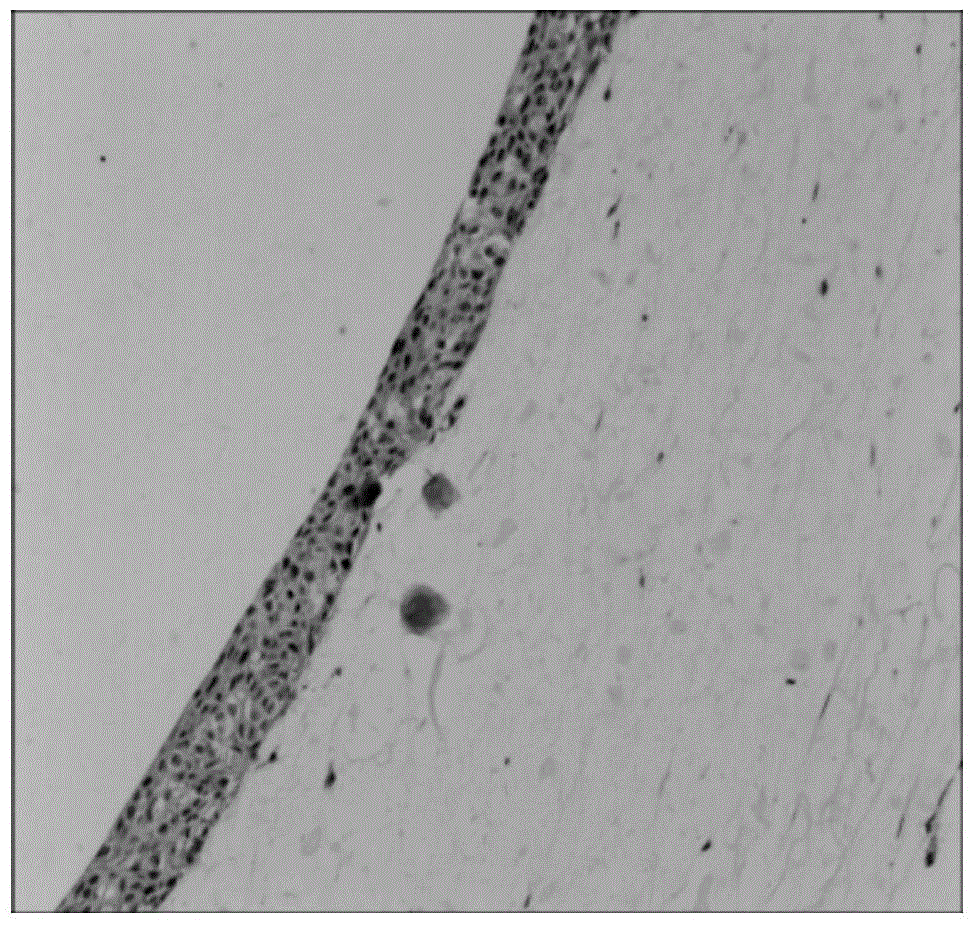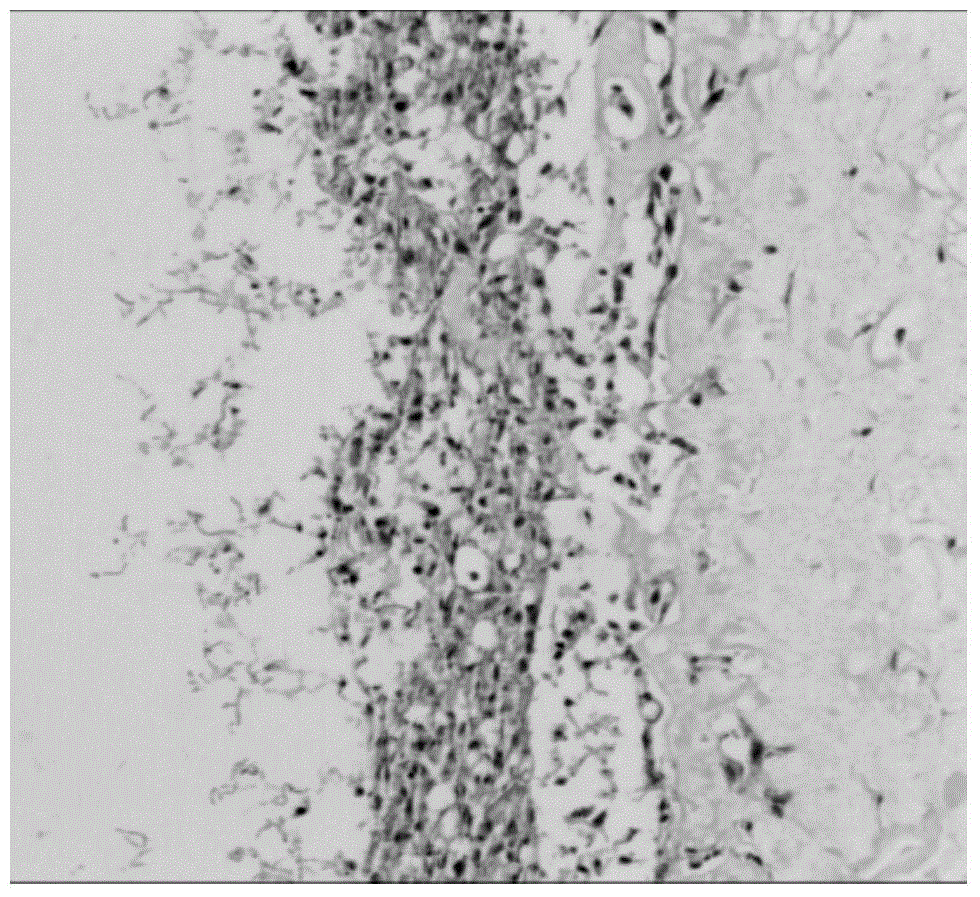Method for determining activity of trichophyton rubrum keratinase
A keratinase activity, technology of Trichophyton rubrum, applied in the directions of microorganism-based methods, microorganism determination/inspection, biochemical equipment and methods, etc. Determining accurate effects
- Summary
- Abstract
- Description
- Claims
- Application Information
AI Technical Summary
Problems solved by technology
Method used
Image
Examples
Embodiment 1
[0022] Under aseptic conditions, the 10 6 Personal skin fibroblasts were resuspended in 2ml of collagen solution, added dropwise to a 6-well cell culture plate, and placed at 37°C, 5% CO 2 cell culture incubator. After 3 days, it was observed under the microscope that the cells were fully expanded, and 10 6 The individual keratinocyte suspension was transferred to the surface of the collagen gel, and then placed in the cell incubator for culture. After 5 days, it was observed under the microscope that the human keratinocytes on the surface of the gel were completely covered, and the air-liquid surface culture was carried out. After that, HE staining of frozen sections was carried out every day, and the culture was stopped when the stratum corneum was differentiated to 5-8 layers after 10 days. Get the artificial skin containing epidermis and dermis structure (see figure 1 ).
Embodiment 2
[0024] Resuspend the cultured Trichophyton rubrum in normal saline, adjust to 1 McFarland concentration (10 6 spores / ml), drop 5μl to the artificial skin containing epidermis and dermis structure prepared in step ⑴, and continue to culture for 48h. HE staining verified that Trichophyton rubrum successfully infected the artificial skin (see figure 2 ).
Embodiment 3
[0026] Collection step (2) About 4ml of the culture solution of the artificial skin infected with Trichophyton rubrum, 4000 rpm for 15 minutes, suck out 3ml of the supernatant, transfer it into 2ml of buffer solution containing 5mg of keratin-azure, put it in 200°C at 30°C Rpm shaker incubation. Replace the supernatant with 3 ml sterile water as a negative control. After 72 hours, place the reaction supernatant on an ice plate, absorb 1ml of the supernatant, and centrifuge at 12,000 rpm at 4°C for 5 minutes. Pipette the supernatant into a 96-well plate, 200 μl per well, repeat 3 wells, measure the OD value at A595 nm with a UV spectrophotometer, and use the blank solution containing the same amount of keratin-azure in sterile water as a negative control. Every 0.01 change in A595 nm compared with the negative control is equivalent to 1 U of keratinase activity, resulting in keratinase activity of 9.85±0.13 U.
PUM
 Login to View More
Login to View More Abstract
Description
Claims
Application Information
 Login to View More
Login to View More - R&D
- Intellectual Property
- Life Sciences
- Materials
- Tech Scout
- Unparalleled Data Quality
- Higher Quality Content
- 60% Fewer Hallucinations
Browse by: Latest US Patents, China's latest patents, Technical Efficacy Thesaurus, Application Domain, Technology Topic, Popular Technical Reports.
© 2025 PatSnap. All rights reserved.Legal|Privacy policy|Modern Slavery Act Transparency Statement|Sitemap|About US| Contact US: help@patsnap.com


